
The Portland Bureau of Emergency Management has long understood that when a disaster strikes, the ability to use cars and trucks could be extremely limited. Because of this reality, PBEM sees bicycles as a key ingredient in their disaster response plans.
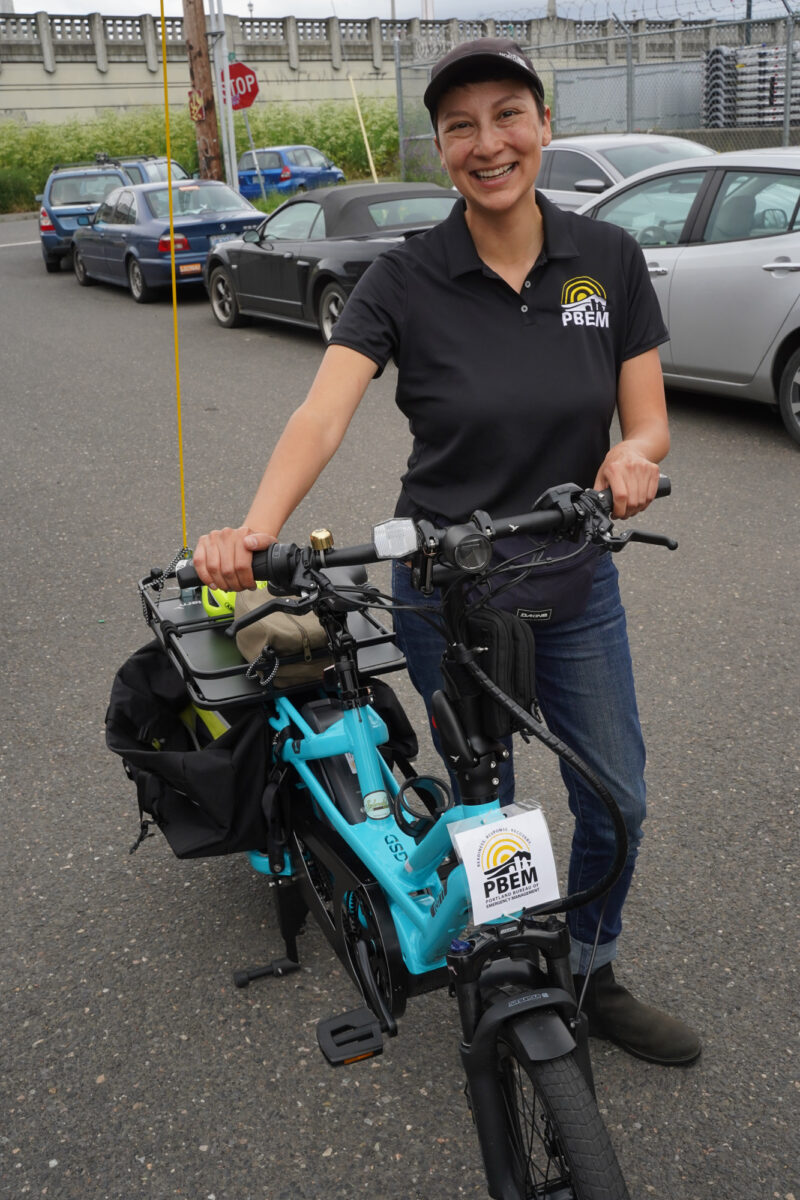
At an event Thursday night sponsored by Tern Bicycles and meant as a social mixer and check-in ahead of Saturday’s Disaster Relief Trials, PBEM staffers unveiled the latest addition to their vehicle fleet: A Tern GSD electric cargo bike. Behind the bike on a trailer was a first-aid dummy sitting on a lawn chair that was bolted to the bed of a large cargo trailer (a Bill Trailer by Surly with a wooden bed).
PBEM Operations Manager Katy Wolf said the new bike is one of two they just added to their vehicle fleet. “Our old e-bikes were old and the batteries were outdated,” she shared with me while standing outside Splendid Cycles on Southeast Ivon Street near the entrance to the Springwater Corridor path. “We needed towing capacity, something that could fit a wide range of riders, run errands, and make resupply runs.”
As for the bike ambulance, Wolf said it is a work in progress. “We want to spread awareness of the bike ambulance concept. It’s not ideal for all types of injuries, but it could work for people who need care and can’t drive.” While it’s just a rudimentary set-up at the moment, Wolf hopes it starts a conversation with other emergency responders and inspire more of them to consider bike ambulances.
This is what the Disaster Relief Trials is all about. Testing new ideas and pushing the limits of equipment.
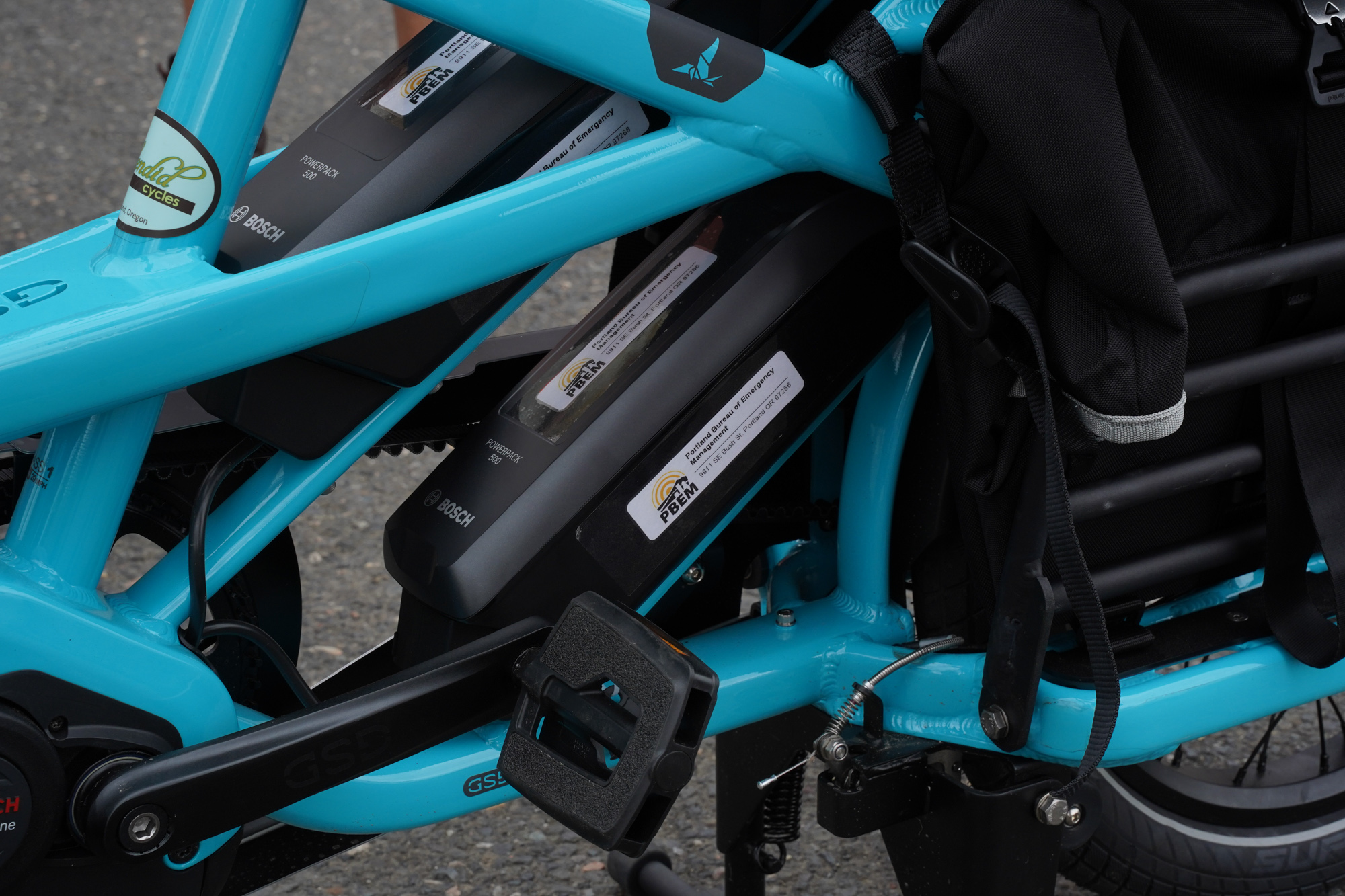
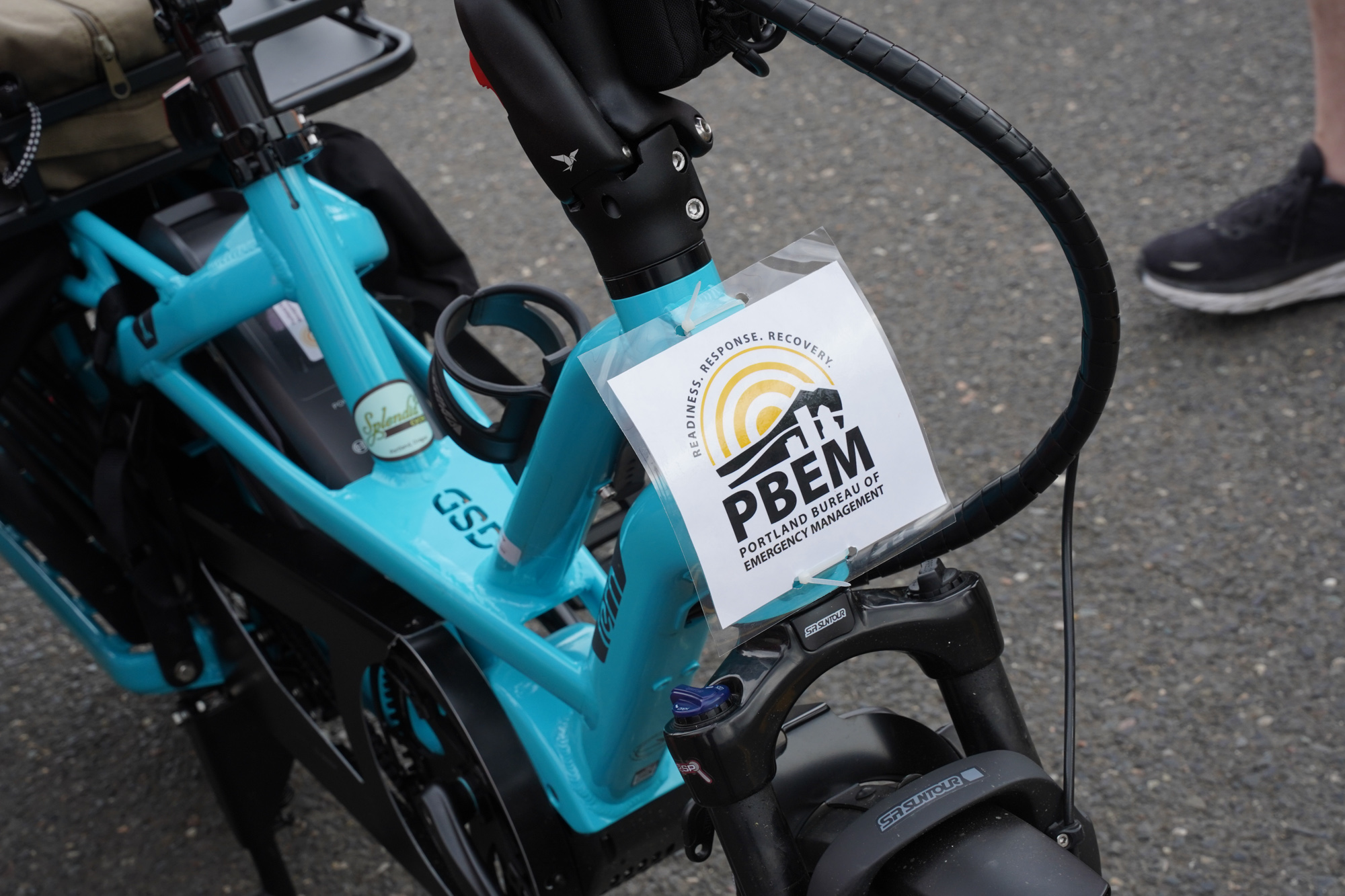
“FEMA says 95% of all disaster victims are rescued by non-professionals. That’s us!”
– Mike Cobb, Disaster Relief Trials co-organizer
“This event looks wacky from the outside, but not to us,” DRT organizer Mike Cobb announced to the crowd last night as he extolled the virtues of bicycles as resilient forms of transportation. “FEMA [Federal Emergency Management Administration] says 95% of all disaster victims are rescued by non-professionals. That’s us!” He went on to explain how FEMA has a program to train and identify Spontaneous Untrained Volunteers and that the DRT is an opportunity to train folks to fit that role.
Over 30 people have registered to take part in Saturday’s event. They’ll be instructed to perform various lifting and hauling tasks on a route through town aimed at mimicking post-disaster conditions.
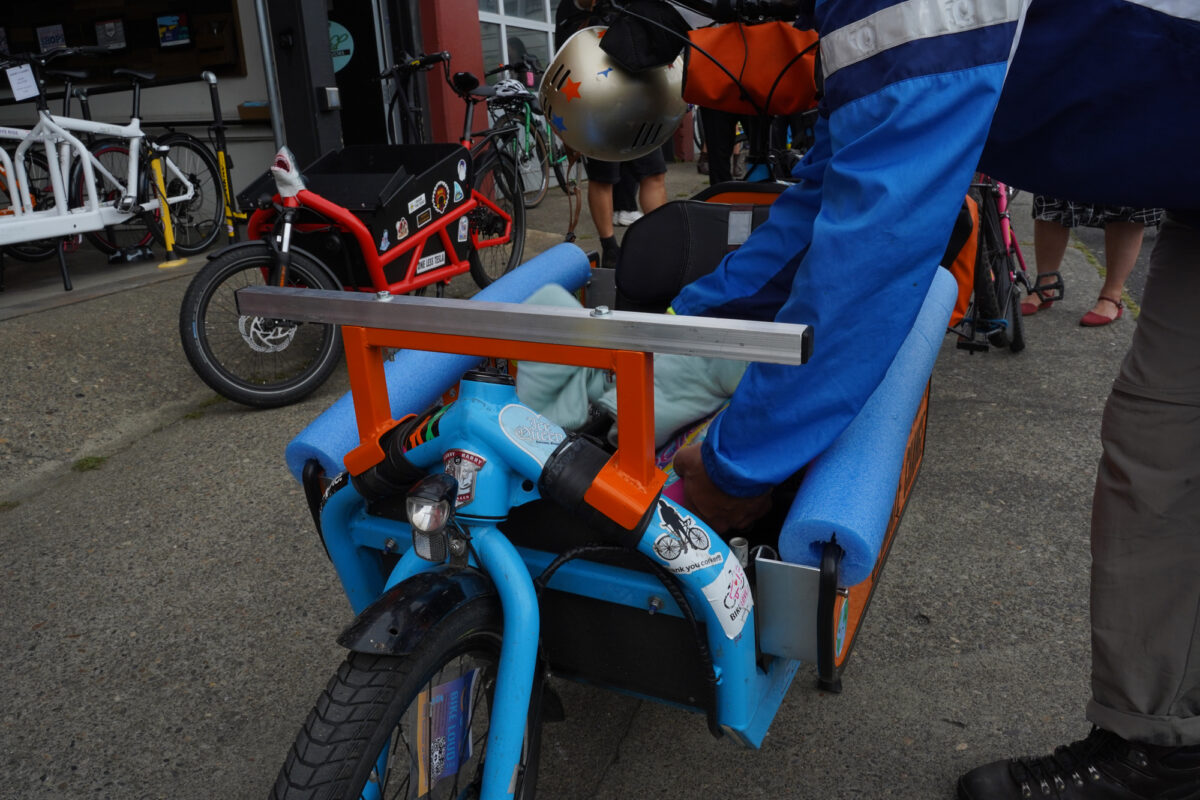
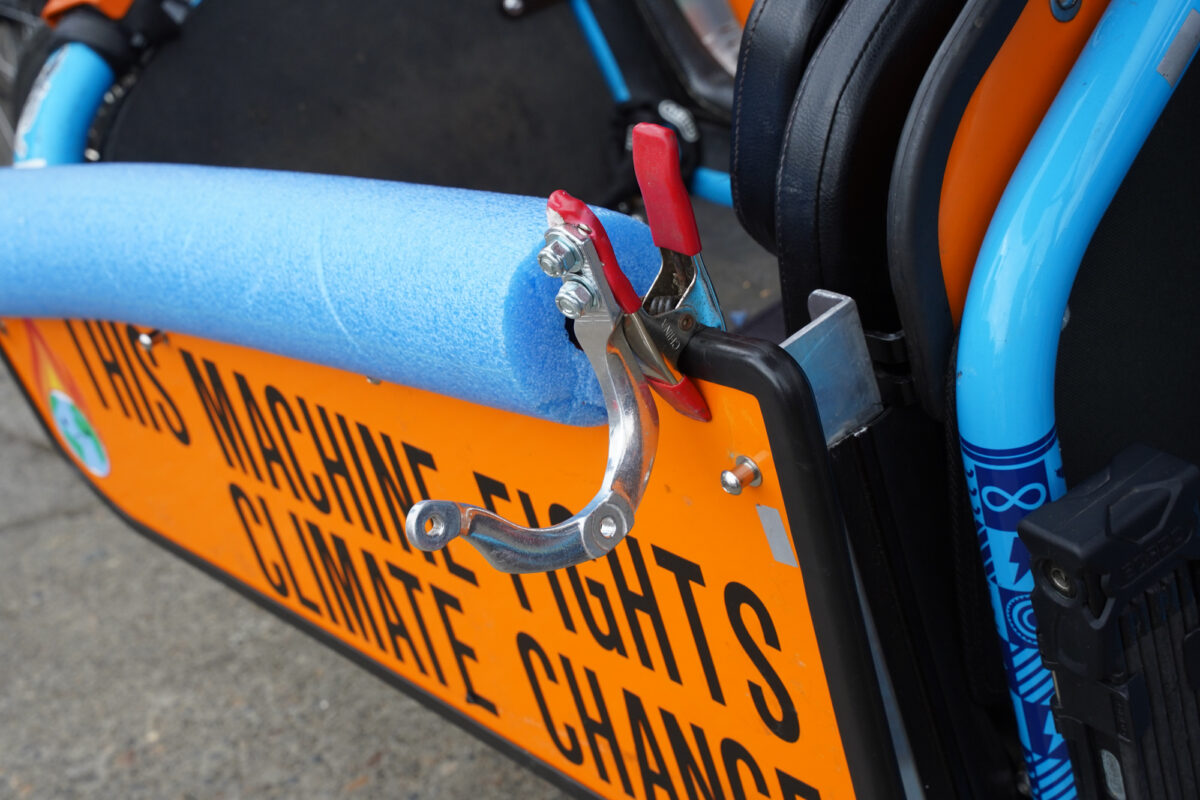
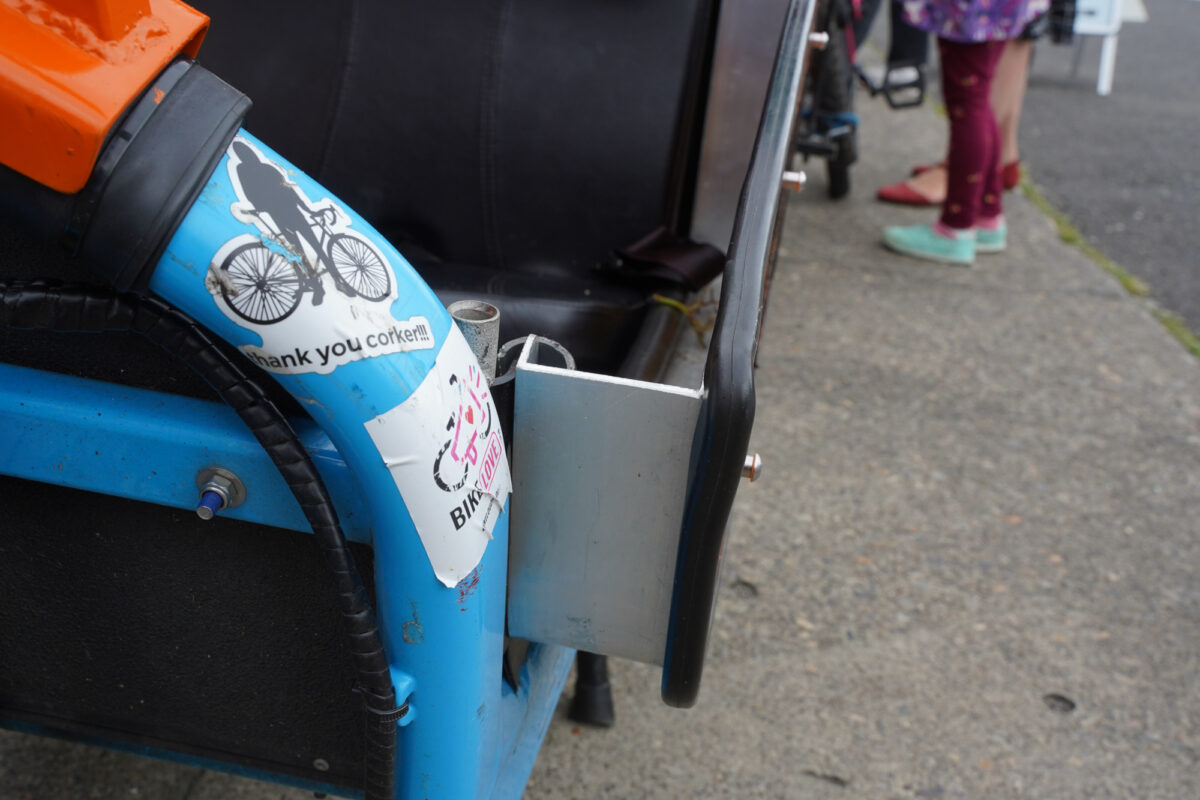

One of the competitors will be our very own e-bike correspondent Shawne Martinez. He showed off several mods to his Larry vs. Harry Bullitt front-loader e-bike last night (above). He’s built a special front rack to carry pallets. The rack will allow him to place pallets in his front cargo box without them interfering with his steering or headlight. He’s also made a clamp-and-hook device with an old bicycle brake caliper that attaches to the side of the box and will allow him to carry long items. Shawne, who will compete with his young daughter (who will ride either inside the cargo box or on her own bike, depending on the weather), has welded two aluminum channels that significantly expand the width of the box.
Shawne and other DRT competitors aren’t sure if their various mods and set-ups will work. On the ride over to event last night, one of the rear wheels on PBEM’s new bike ambulance trailer fell off. Good thing there wasn’t a real person in that chair.
And good thing they have the DRT event to practice and make perfect before a real disaster strikes.
The DRT and Resilience Fair take place at Cully Park from 10:00 am to 5:00 pm on Saturday, June 11th.
Few more photos from the event below:


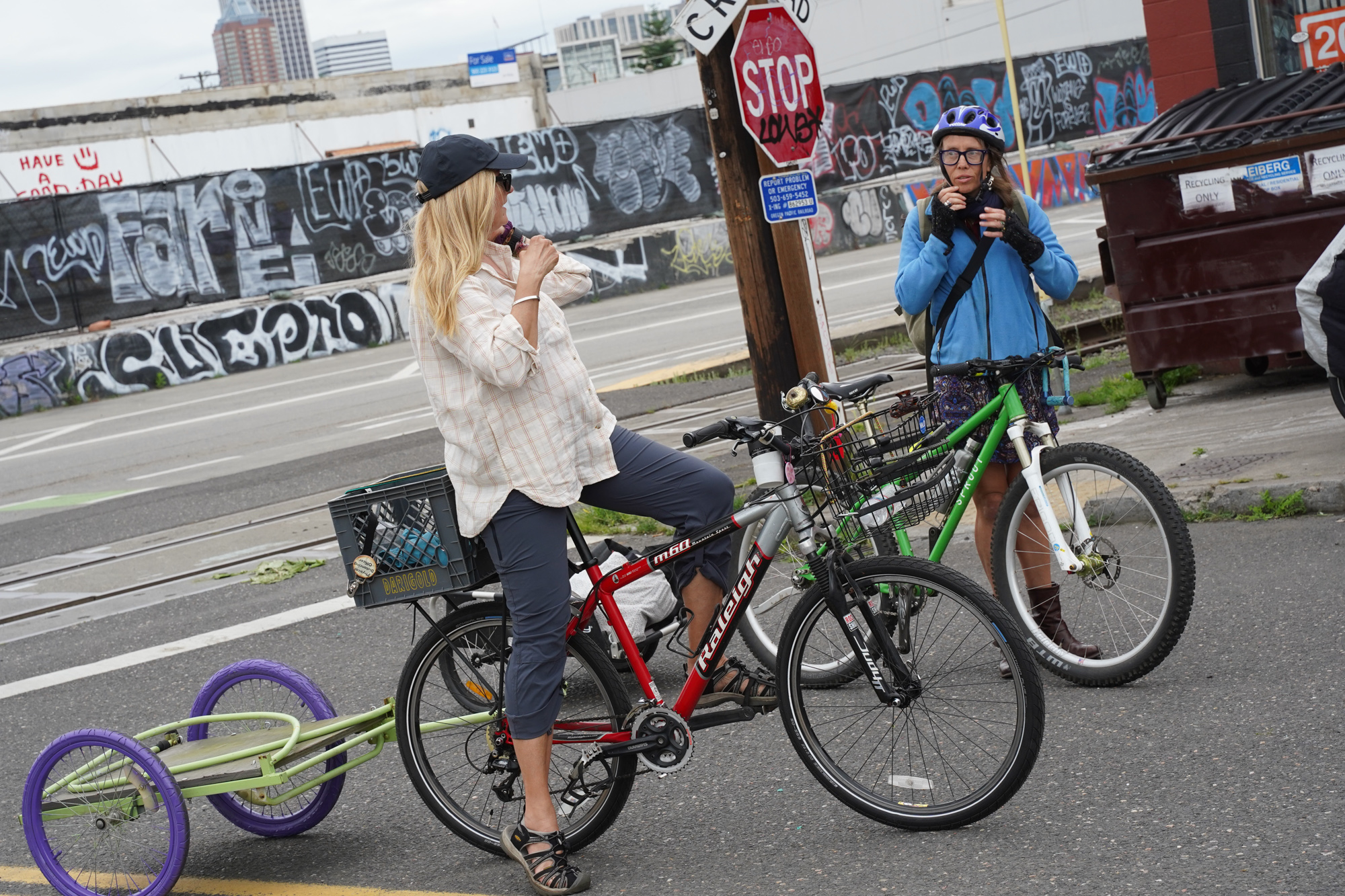
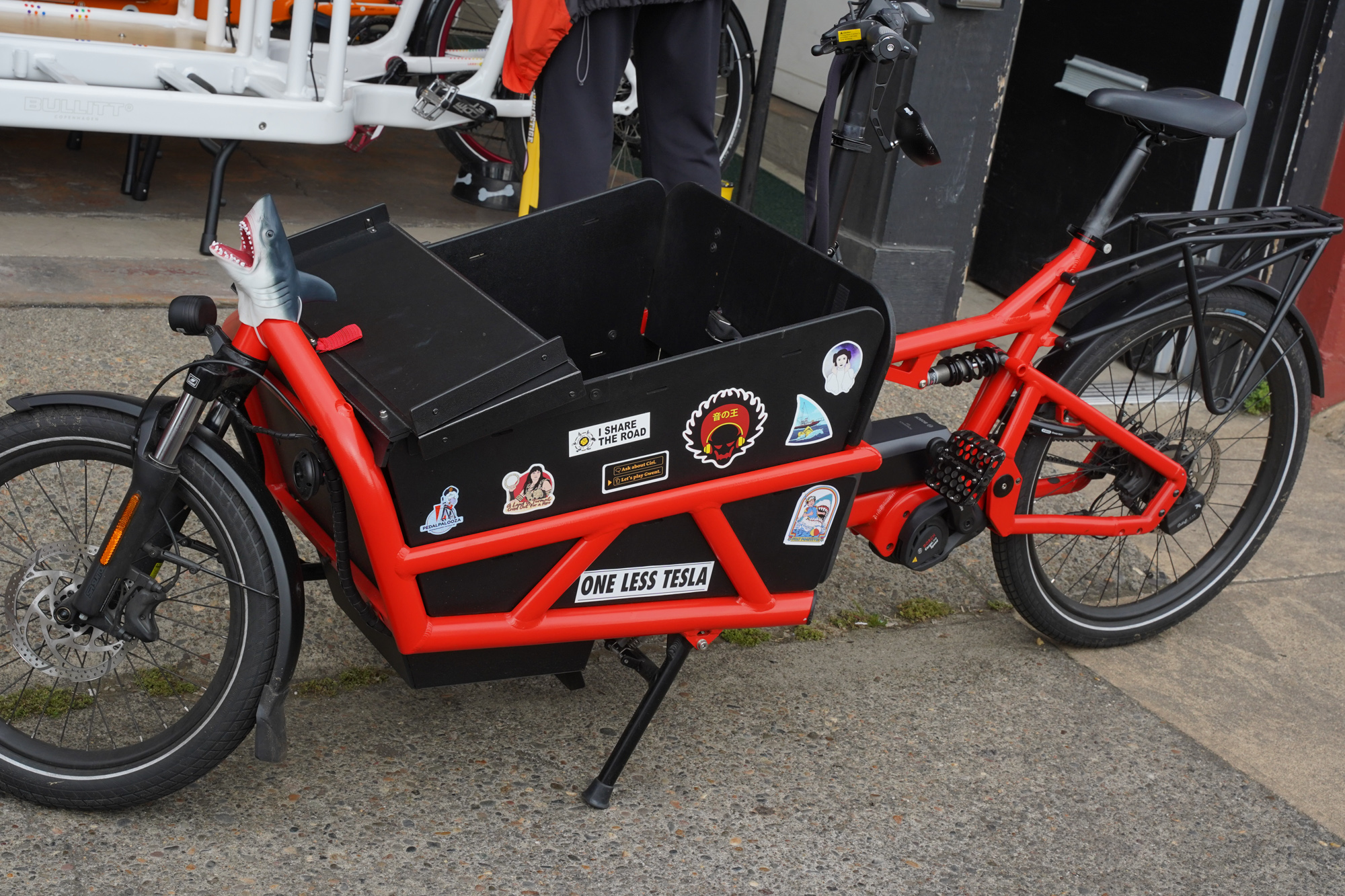
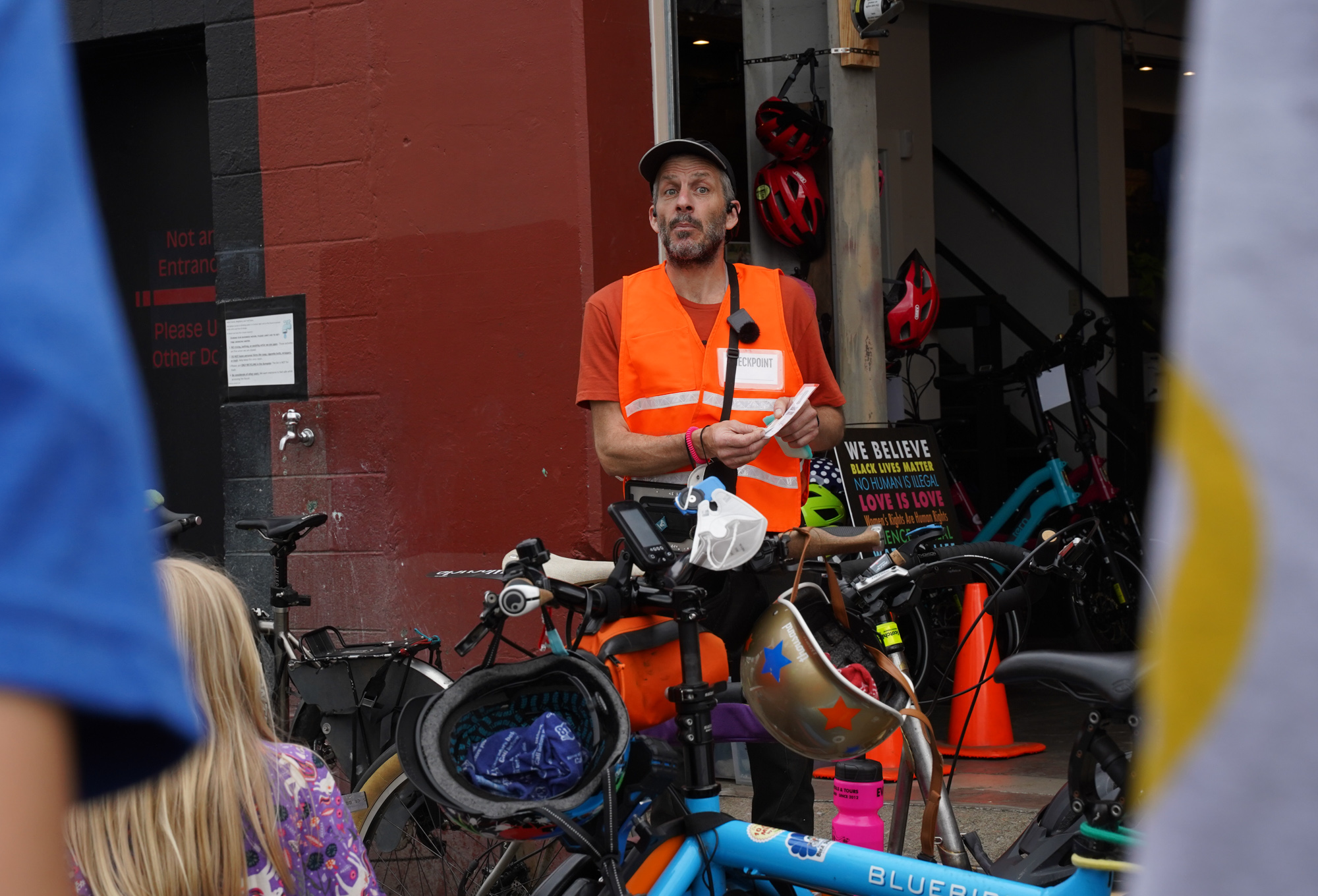


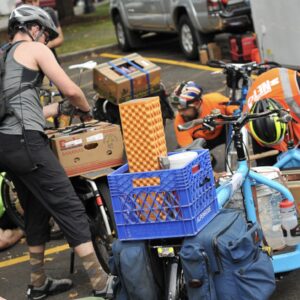

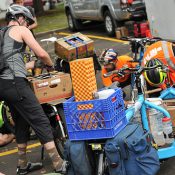
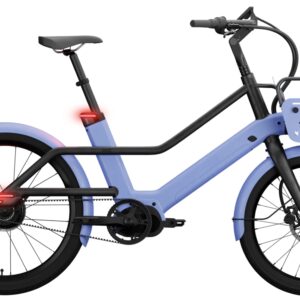
Thanks for reading.
BikePortland has served this community with independent community journalism since 2005. We rely on subscriptions from readers like you to survive. Your financial support is vital in keeping this valuable resource alive and well.
Please subscribe today to strengthen and expand our work.
How’s that lithium mine project in eastern Oregon coming along?
Open pit mine? What could go wrong? Oregon could really use its own Berkeley Pit. All this opposition is just from a bunch of NIMBYs. Maybe Lithium Americas can get to yes by promising some bike lanes, high-density mixed-use development, and coupons for shiny new ebikes.
If it were me I might have tried to coin the term “ambikeulance”
So, when The Big One strikes, it’s bikes to the rescue?
So if the infrastructure is too damaged for vehicles to roll on, but not too much for bike heavily loaded bikes on much narrower tires and electricity still works, we’ll be prepared
If the big one ever hits, bicycle theft will skyrocket because they’ll be more valuable than gold.
If you’re in a scenario where you can’t use a regular ambulance during an emergency, the electrical grid likely won’t be available for charging an ebike, either. What happens when you deplete the battery after one or two hauling trips?
Solar panels?
Patient is going to flatline while waiting for the bike to recharge.
When an ambulance runs out of fuel, it’s pretty tough to push.
When an electric car/truck battery is depleted, same thing.
When an e-bike battery is depleted, it becomes a heavy bicycle. Slower, but still useful.
Much like a broken elevator is useless, but a broken escalator becomes stairs.
Um… that’s a piece of plywood with a lawn chair on it.
gotta start somewhere!